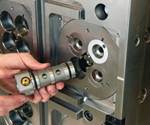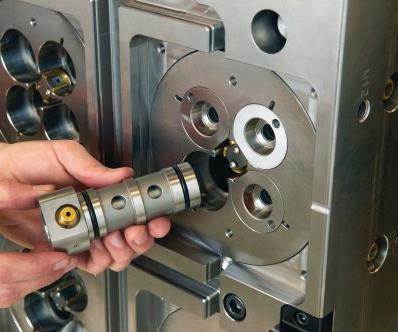In the Trenches: Developing a Workorder Database
Total productive maintenance can be achieved by tracking history and directing future efforts with the right computer-based system.
Molds are one of the critical components necessary to manufacturing plastic parts, along with presses, robots, end of arm tooling (EOAT), degaters and a variety of other equipment. As such, a preventive maintenance (PM) system with a functional workorder database that covers molds is required to achieve effective maintenance results.
This point has been made more than adequately by Steve Johnson from ToolingDocs in Ashland, Ohio, through his MoldMaking Technology “Across the Bench” series. So instead of reiterating the case, I will cover some considerations for developing such a system.
The first step in acquiring a workorder database (whether by purchase or design) is to determine the benefits you intend to derive from it, which may include: a simple record of previous work on the mold; a running log of tool repairs; documentation to prove maintenance has been done; tool condition documentation; a corrective action database; a troubleshooting system; and a comprehensive database with all tool details, from drawings and bill of materials to history and condition.
When considering one of the off-the-shelf software products, ensure it can adequately handle your operation’s needs. In our case, a system was available that met the desired criteria, but it was too cumbersome to collect the data required to run it. A simple one-week test verified that we could not depend on “people” to provide the information that our resource management system did not capture. We needed a system that could work with the data we were able to collect.
Maintenance Documentation
The TS16949 International Quality Management Standard touches on every aspect of the automotive supply chain, including tool maintenance documentation. The standard does not specify a paper or electronic system, so a computer-based system is preferred.
There also are instances outside of a TS audit where accessible compliance documentation is a benefit—for example, during the PPAP process, when evidence of an established PM system is requested at tool launch or during a tool transfer, so the recipient has some useful tool history. Another case for which tool history is helpful is in responding effectively and honestly when customers offer periodic tool refurbishment money.
Resource Management
The main benefit I want from a workorder database is the ability to avoid what the guys in my shop call “doing the dumb”—repeating the same repair over and over in a pointless cycle.
An effective preventive maintenance system should predict, or at least lead you to, trends and probabilities. For example, seeing tools that are “repeat offenders,” so you can take action to get out of that repair cycle. The goal is to provide an environment in which improvements are being made on the shop floor, not just fixes.
Accurate History
Memory is a notoriously unreliable resource, so depending upon memory to run a preventive system is ineffective at best and counterproductive at worst. A computer-based system with the appropriate raw data is the only reliable option for tracking history and directing future efforts, and therefore achieving total productive maintenance. Prior to developing or purchasing a system, decide what is your biggest concern. Is it costs, downtime or failure frequency? In all probability, it will boil down to cost any way you look at it—cost in terms of dollars, labor, lost productivity or your mental health.
Corrective Measures
You can’t prevent what you can’t predict. The PM system needs to tell you where to concentrate your efforts to get the biggest bang for your buck. Your memory may tell you that tool X needs “something” because it ruined a weekend for you. However, it may not tell you that the issue causing you the most press downtime (costing you profit) is drag marks on parts and that this defect is found primarily on four or five tools. So, instead of spending money to install new lifters in tool X, you could invest two hours per tool on the five offenders (for drags) and cut your lost profit.
Caveats
The more information you have the better, right? However, collecting and deciphering the wrong information is counterproductive. One of the early system iterations that we developed included the part number, part reference number (from our resource management system), part description and several other auto-filled fields. These superfluous fields forced me to scroll across the page when entering the workorder, so I eventually hid them in the interest of time and efficiency. After a couple years of never opening those fields, it dawned on me that they were also slowing down data analysis, so I deleted them. Deciding your desired end result ahead of time will help determine what information to track and what not to track.
Results
After several modifications, we now have a system that includes enough general categories and specifics, including the individual who did the work, the dates to establish a sequence of events, amount of time spent on the events, what work was performed, etc. In addition, we developed several reports that can be populated with a specific group of workorders (typically those in a specific date range). These reports analyze the data and enumerate the top part-defect issues and the top tools that produce those defects. Then we can take aim at those issues and tools. Every month we track and compare these reports, and this enables us to see if we are reducing scrap and downtime.
As Steve Johnson has so persuasively argued, to avoid useless firefighting you need an electronic workorder system to help you do what needs to be done.
Related Content
What is Driving Mold Lifecycle Management Digitalization?
OEMs are looking to partner with suppliers to share and track data across the supply chain for advanced intervention and process management.
Read MoreThink Safety: Eliminate Hazards Throughout the Shop
The tooling community is taking advantage of new products for safer mold shops and molding facilities.
Read MoreSteps for Determining Better Mold Prices
Improving your mold pricing requires a deeper understanding of your business.
Read MoreMold Design Review: The Complete Checklist
Gerardo (Jerry) Miranda III, former global tooling manager for Oakley sunglasses, reshares his complete mold design checklist, an essential part of the product time and cost-to-market process.
Read MoreRead Next
In the Trenches: Mold Repair
In this multi-part series of articles, contributer James Bourne, a tool repair supervisor and freelance writer, shares his own personal struggles in the business, as well as lessons learned and tricks of the trade garnered along the way.
Read MoreHow to Use Strategic Planning Tools, Data to Manage the Human Side of Business
Q&A with Marion Wells, MMT EAB member and founder of Human Asset Management.
Read MoreReasons to Use Fiber Lasers for Mold Cleaning
Fiber lasers offer a simplicity, speed, control and portability, minimizing mold cleaning risks.
Read More




















